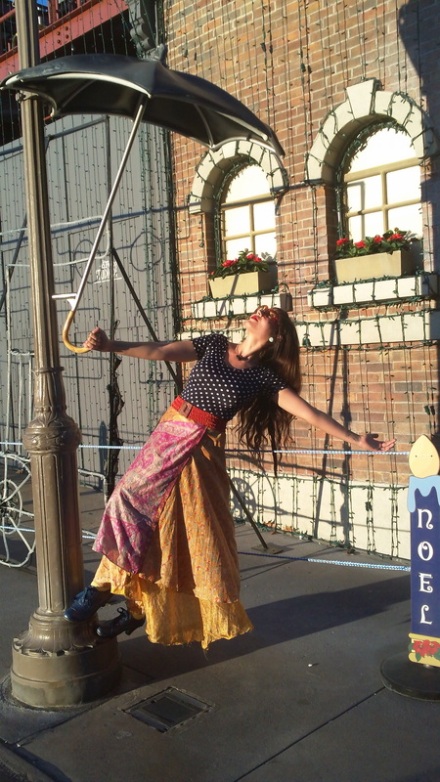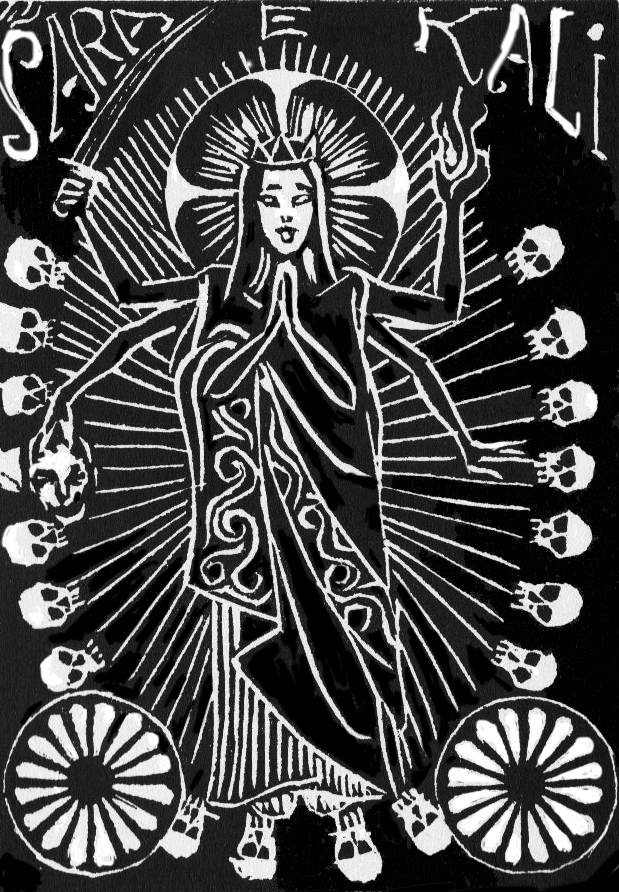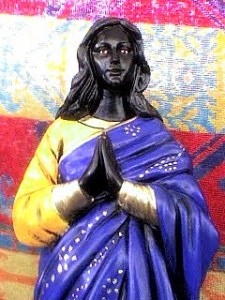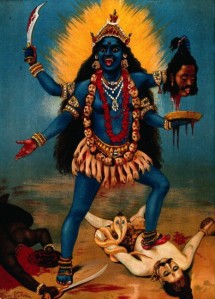So delighted and honored to say that my poem “Transfiguration of the Black Madonna: Gypsy Goddess, Gypsy Saint” was nominated by The Infoxicated Corner of The The Poetry Blog for Best of the Net. Check out the other nominees here!
Romanipen
On being a ‘Gypsy’ Witch
Fox-Frazier Foley, writer and curator of The Infoxicated Corner of The The Poetry Blog, solicited an essay about Romani poetics and language, and immediately I knew I would write about Luminiţa Mihai Cioabă’s poem “The Apparition of Choxani,” from the anthology The Roads of The Roma: a PEN Anthology of Gypsy Writers. Fox has mixed Romani heritage too, so the project felt like a gorgeous act of unity and cultural collaboration.
For me to better understand “The Apparition of Choxani,” and write what became my article, The Magic Word:
‘Gypsy’ Witchcraft, Love, and Breaking Tradition in Luminiţa Mihai Cioabă’s Poem “The Apparition of Choxani,” I had to look at my Romani family’s history as well as our traditions—not those that endured, but rather those that were extinguished.

With a headband that my lovely Romani friend, writer Norma Szokolyai, gave me when we taught in France together on the CWW Yoga & Writing Retreat
My entire Romani identity is invested in my grandmother and what she taught me, and her identity springs from what her family could pass on to her while simultaneously obscuring their ethnicity and shedding their culture, attempting to avoid the gas chambers or a bullet in a ditch. They had a unique opportunity to do this, namely that some of the Romani family had already married gadjé and assimilated for love, and my beautiful and resourceful great-grandmother decided to re-marry a cruel-but-useful gadjo (non-Roma) and bring her three children with her to his farm in the countryside. There are whispers that her papers were forged and documents were signed by Hitler, but the details were lost a long time ago. This saved our line but left holes in our Romanipen (The Romani Way)—we lost parts of our Roma soul. I never learned Rromanès, because my grandmother wasn’t allowed to speak it—how could they explain to the suspicious Nazi officers who burst-in from time to time why their children spoke Gypsy-tongue? Most Romani families affected by the Holocaust did not break and bury their traditions. Fate tossed my great-grandmother a bone and she took it, but most Roma in WWII Europe knew that they could not assimilate and would not be allowed to. They spoke Rromanès and Romani women wore dikhle (traditional head coverings), even in the concentration camps. In the camps, there are accounts of Roma singing traditional songs and even dancing to keep their spirits and their dignity. What else is there to do in the face of utter hatred and persecution but dance? Recently, a Belgian village hired a DJ tried to try to (illegally) oust Roma from their camps with loud music, and the Roma danced then too.
My grandmother taught me our family trades, dancing and drabaripé (fortune telling, and healing magic), and although I didn’t learn about Choxani until I began researching my more about my cultural heritage as a young woman, she taught me about a different kind of witch— the drabarni, or healer or adviser. Usually the drabarni is a woman in the Romani community who uses prayer, amulets, herbs, and energy work to heal physical, emotional, and spiritual illness. Some of these practices survived in my family because far down the line there was a drabarni in my grandmother’s family. Romani magic is quite real within the culture, but it looks nothing like the “Gypsy Witchcraft” books you can get at B&N. Even though our family assimilated and we lost so much, even though I went to school with gadjé children where I didn’t learn anything about the history of my people, not even the fact that Americans enslaved Roma alongside African Americans in the Old South, I was still different. I was still stoned till I bled on the playground after I leaked the truth about my family roots when I was six years old and too proud of my grandmother for my own good, despite her many warnings to stay quiet. I was still given detention by my fifth grade teacher for being a “Gypsy witch.” I started wearing the epithet like a mantle. I proudly practiced my family trades when I was a teen, through college, and whenever I was in a tight spot. But it was still nothing like the fantasy Gypsies in story books– it was real, gritty, and sometimes heartbreaking. It was an identity that I claimed with such mixed feelings that, for years at a time, I would refuse to crack open my deck of cards because I couldn’t be a Gypsy freak-show for one more day. And other times, I felt like I was making my ancestors proud, that I was my grandmother’s blood, and I was grateful for my beautiful and complex culture.
In short, it matters when the word “Gypsy” is appropriated and redefined by outsiders. It’s our heritage, it’s our genocide, it’s our right to reclaim the ethnic slur used against us. If we are witches, it is because we have not been understood by outsiders–we are not magical, but we have a powerful culture. So be it.

Healthy juices & smoothies and Gypsy Cuisine– The Daily Meal recipe round-up!
In case you were wondering about juice cleanses, smoothies for energy, making healthy drinks exciting and tasty, and Romani (Gypsy) cuisine, here are The Daily Meal articles I wrote over the summer. I notice that I create a lot more (and better) and I am a whole lot happier when I’m taking good care of myself. I hope these make you feel good!
Recipes and Articles
How to Eat Like a Real ‘Gypsy’” in The Daily Meal
“10 Ways to Make Health Drinks Less Boring” in The Daily Meal
“10 Smoothies for All-Day Energy” in The Daily Meal
“10 Reasons to Try a Juice Cleanse” in The Daily Meal
“10 Ways to Do a Juice Cleanse Healthily” in The Daily Meal
If you want more, cruise The Daily Meal or check out my Pinterest board
My love letter to “Political Punch” and Gypsy poems

Picture taken by Sarah Sullivan during a Quail Bell photo tale shoot for “Free Spirits” http://www.quailbellmagazine.com/the-unreal/photo-tale-free-spirits
“Gypsy’s First Caravan” in Quail Bell Magazine
This is the story of the first time I stepped inside a caravan and spent the night, the antigypsyism that met me at the estate, how my grandmother’s family settled in Nazi Germany, and why fortune-telling is an enduring family trade. It’s all related.

Holding the crystal ball inside “The Gypsy Retreat.” Image Source: http://www.quailbellmagazine.com/the-real/culture-roma-traveller-history-month
http://www.quailbellmagazine.com/the-real/culture-roma-traveller-history-month
Thank you so much, Quail Bell Magazine, for giving me the space, support, and energy to explore this for Roma & Traveller History Month. I love writing for you.
Today, Roma celebrate the Goddess-Saint Kali Sara
St. Sarah, Kali Sara, Sara Kali, Sara-la-Kali, Sati-Sara, The Black Madonna, The Black Mother… many names for one Goddess-Saint sacred to Roma all over the world. Today is her festival– she is the Goddess of Fate, good fortune, fertility, and protection– and Roma honor her in pilgrimage, by worshiping her statue, through dance and community… so many ways, so many incarnations of the goddess who accompanied the Roma all the way from India.
Take a look at these articles below for more information about the Goddess-Saint, Romanipen/Romani religion/spirituality, and her celebration. Be sure to click the links for the whole articles.
“Until recently it was widely believed that this worship of Kali Sara, the Romani Black Madonna or Goddess was unique to Les Saintes Maries de La Mer. My own recent research among Romani refugees from the Czech Republic, Slovakia, Poland and in countries of the Balkans has uncovered the little-known fact that other Black Virgins are worshipped by Roma in central/eastern Europe and that Roma from these countries perform similar rituals. These rituals include laying flowers at the feet of the statue, adorning the statue with clothing of the sick hoping for cures, placing requests to the statue, and lighting candles to the female divinity. To the Roma, Kali Sara is the Protectress who will cure sickness, bring good luck and fertility and grant success in business ventures.
The Romani ceremony at Les Saintes Maries, as elsewhere, consists of carrying the statue on a platform strewn with flowers (4) into the closest body of water such as a sea, lake, flowing river or even a large pond of clear water. The platform is then lowered to touch the water while the crowd throws flowers into the water. Indian scholars such as Dr. Weer Rishi (5) and others who have witnessed this Romani ceremony, as well as Western observers who are familiar with Hindu religious customs have identified this ceremony with the Durga Poojaof India. In Romani, Kali Sara means Black Sara and in India, the Goddess Kali is known as Kali/Durga/Sara. Like the Hindus, the Roma practice shaktism, the worship of Goddesses. In other words, the Roma who attend the pilgrimage to Les Saintes Maries in France and in other related ceremonies elsewhere honouring black female divinities, are in fact continuing to worship Kali/Durga/Sara their original Goddess in India.According to the Durgasaptashati (seven hundred verses in the worship of Goddess Durga and her various forms), chapter 5, verse 12, which mentions Sara, contains the following: “Salute to Durga, Durgapara, (Deliver of all difficulties), Sara, (Embodiment of everything par-excellent), Cause of everything, Krishna and Dhurma (Evaporated form in smoke).” Other references in this ancient Hindu scripture also confirm that Sara is one and the same with the Indian goddess Durga who is also another aspect of Kali, the consort of Shiva.” —“THE ROMANI GODDESS KALI SARA” by RONALD LEE
“Some Romani groups in Europe today appear to maintain elements of Shaktism or goddess-worship; the Rajputs worshipped the warrior-goddess Parvati, another name for the female deity Sati-Sara, who is Saint Sarah, the Romani Goddess of Fate. That she forms part of the yearly pilgrimage to La Camargue at Stes. Maries de la Mer in the south of France is of particular significance; here she is carried into the sea just as she is carried into the waters of the Ganges each December in India. Both Sati-Sara and St. Sarah wear a crown, both are also called Kali, and both have shining faces painted black. Sati-Sara is a consort of the god Ðiva, and is known by many other names, Bhadrakali, Uma, Durga and Syamaamong them.” —
“ROMANI (‘GYPSY’) RELIGION” by Ian Hancock
Sara, toi la sainte patronne des voyageurs et gitans du monde entier,
tu as vécu en ce lieu des Saintes-Maries-de-la-Mer.
Tu es venue d’un lointain pays au-delà des mers.
J’aime venir te retrouver ici, te dire tout ce que j’ai dans le Cœur,
te confier mes peines et mes joies.
Je te prie pour tous les membres de ma famille et tous mes amis.
Sara, veille sur moi!(Sara, patron saint of travelers and gypsies the world over, you who lived in this region of Saintes-Maries-de-la-Mer. You came from a far-away country from across the seas. I love to come and find you here, to tell you all that I have in my heart and in you confide my sorrows and joys. I pray to you for everyone in my family and all my friends. Sara, come to me!) —Saint Sara-la-Kali: A Sister to Kali Maa
Do you want to model? Are you an artist or a writer? ‘Cause Quail Bell might like to see you
The Quail Bell Crew seeks writer models for its signature Photo Tales. Our models may come in any shape, color, or size, but they must possess self-confidence. All shoots are produced and photographed by women, so no worries about the male gaze. You’re encouraged to write your own accompanying poem, flash fiction, or statement (because brains are sexy), and to select your own vintage or indie designer outfits. We like our models to be an equal part in the creative process. Contact us today and you might see yourself featured soon. http://www.quailbellmagazine.com/3/post/2014/03/good-advertising-models-for-photo-tales.html
Here’s mine! It’s an American-Roma style shoot with a vintage Gunne Sax dress and Indian vest from The Other Side Vintage in Tallahassee, green glass beads from Great-great grandmother Mathilde, and my poem. Photo Tale: Free Spirits

Great-great grandmother Mathilde in her traditional Romani dance garb. Image from “Romani Fashion and the Politics of Dressing ‘Gypsy'” http://www.quailbellmagazine.com/3/post/2013/12/folkways-gypsy-soul.html

Image from Free Spirits http://www.quailbellmagazine.com/2/post/2013/08/photo-tale-free-spirits.html
And here are my other Quail Bell Romani fashion adventures: “Real Gypsy Looks” and “Romani Fashion and the Politics of Dressing ‘Gypsy’”

Image from Real Gypsy Looks http://www.quailbellmagazine.com/3/post/2014/02/fashion-romanipen.html
“God grant that I will die in the pub!” and other Romani Oaths that I should use all the time
Solax, or oath-swearing is an interesting can be humorous and informal or deeply serious and ritualistic. Learn more about it here on ROMBASE: didactically edited information on Roma. http://ling.uni-graz.at/~rombase/cgi-bin/art.cgi?src=data/ethn/belief/oath.en.xml
For the record, The Corner House in Cork City, Ireland is my favorite pub, or God grant that I will die in that pub in front of the fire place with a lovely hot port on the tree-slice table before me.
Image from: www.panoramio.com










